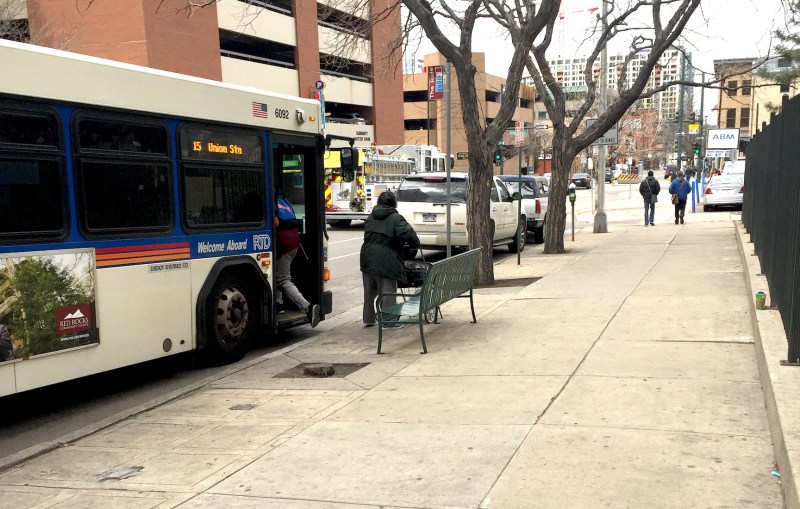RTD Board OKs Another Round of Bus Service Cuts, Along With Some Improvements
The periodic service changes may help the system, but individual riders will suffer.

The RTD Board of Directors approved dozens of changes to the transit agency’s bus service Tuesday night, including the consolidation of bus stops to speed up service. But the suite of changes, coming in May, also includes service cuts that will affect riders trying to get to their daily destinations.
RTD lists the changes in detail on its website, but it hasn’t been updated to reflect tweaks made by staffers after several public meetings [PDF].
Riders on 12 routes around the region will have to deal with buses coming less often. Riders of the 0L and the 3L will see more buses coming more often, while riders of the 46 will see the route extended on weekends. Ten routes will see their bus stops spaced out more evenly to avoid the time-eating stop-and-go that occurs when drivers have to brake every block.
Denver’s transit agency is underfunded. So, three times a year, RTD examines every one of its routes and looks for ways to make the transit system run more smoothly with the resources it has. Problem is, people who ride buses and trains with low ridership get left in the lurch when the agency cuts back on their routes to add service where demand is higher.
Case in point: Ten people (on average) rely on the 3:24 a.m. run of the 121 bus along Peoria Street every day. RTD is scrapping this run, meaning riders will have to get to the stop 30 minutes earlier to get where they’re going on time.
The flip side: RTD is adding a bus trip to the 0L along South Broadway during the afternoon rush, which will serve more than 10 people a day.
The Peoria Street cut will save about $23,000 annually, according to RTD documents, while the South Broadway addition will cost about $15,000. In all the May service changes will theoritically save the agency $153,000 a year. That money will likely be reinvested into the system during the next round of changes in August, manager of service planning and scheduling Jessie Carter told Streetsblog. The cuts will also eliminate three full-time driver positions — another belt-tightening measure for an agency that needs 140 more drivers than it has.
This is the reality of a transit system expected to serve a growing Denver and its sprawling suburbs and exurbs with no increase to its sales tax revenue since 2004 — and that funding can’t be used for the base bus system. Expect the cash-strapped agency to continue the juggling act as long as its sales tax share remains static, and as long as state law makes RTD give parking spots away for free.
If Mayor Michael Hancock truly wants to reverse the trend of falling ridership and double the share of trips by transit in the city proper, he’ll have to invest in bus service and in physical changes to streets that make the bus competitive with driving. That’s what the city’s first-ever transit plan, due out this spring, will likely call for. But as of now, there’s no clear path for funding or implementation.


